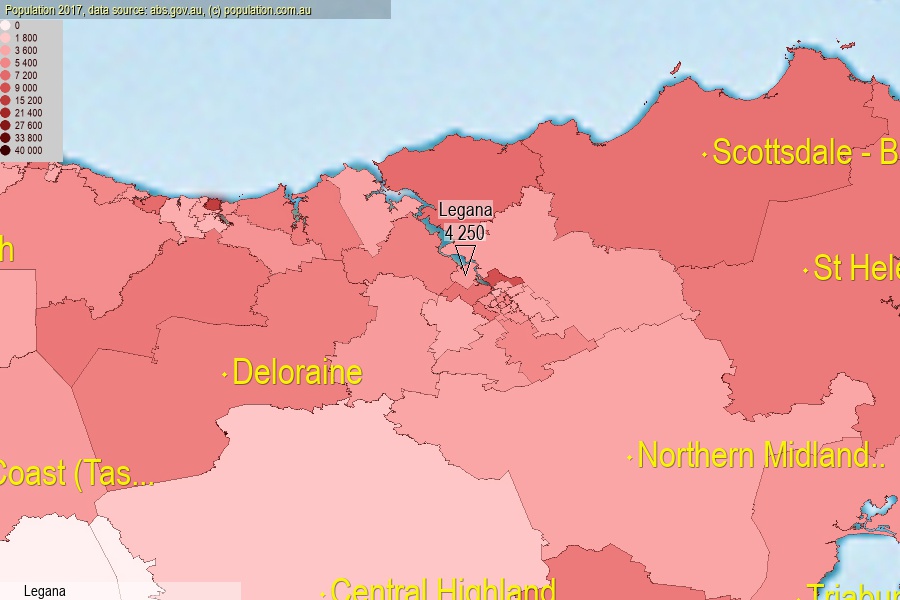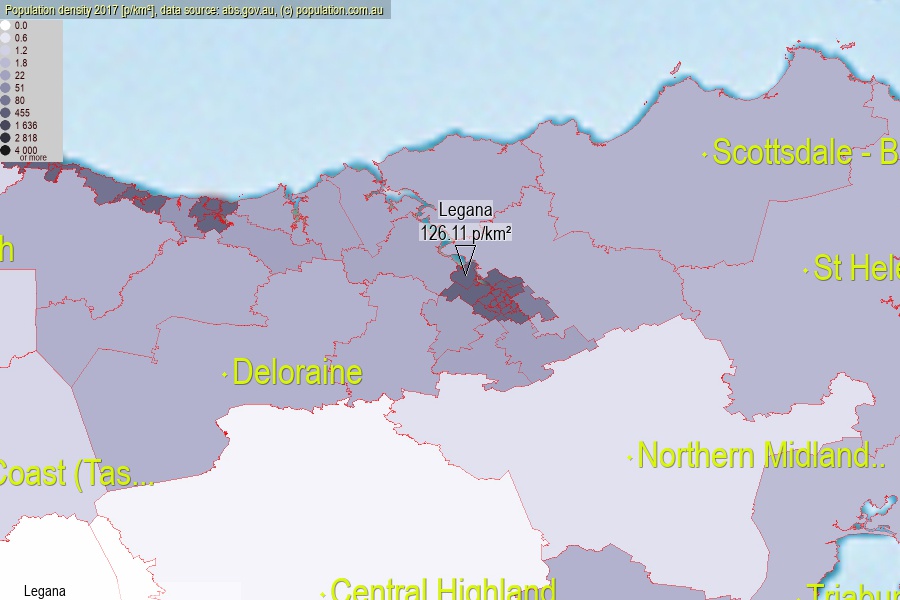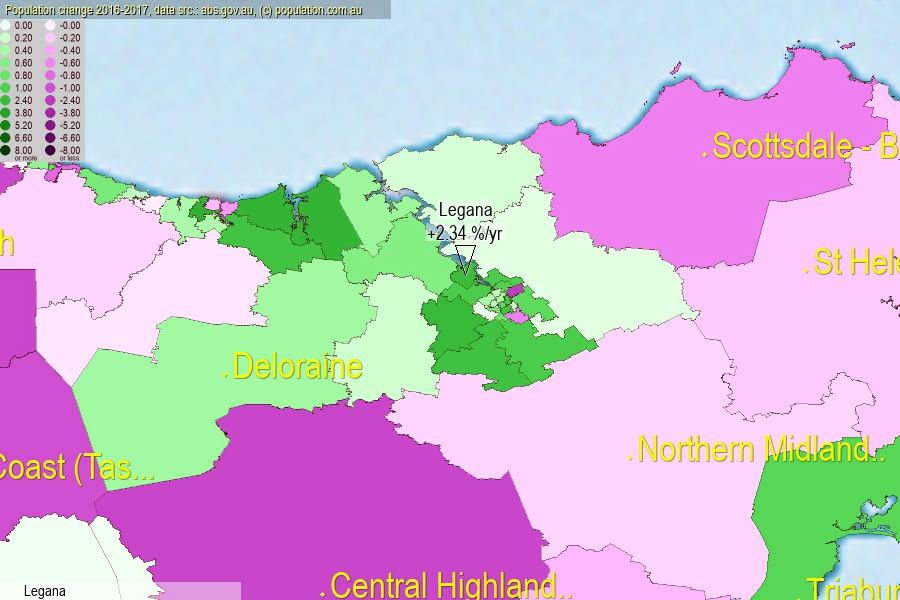 population.com.au
population.com.auLast official estimated population of Legana (as Statistical Area Level 2) was 4 250 people (on 2017-06-30)[2]. This was 0.02% of total Australian population and 0.807% of TAS population. Area of Legana is 33.70 km², in this year population density was 126.11 p/km² . If population growth rate would be same as in period 2016-2017 (+2.34%/yr), Legana population in 2025 would be 5 112. [0]



Click to enlarge. Legana is located in the center of the images.
Population [people], population density [p./km²] and population change [%/year] [2]
View borders » (new window) [4]
[1991-1992] +4.04 %/Yr.
[1992-1993] +7.87 %/Yr.
[1993-1994] +6.44 %/Yr.
[1994-1995] +9.03 %/Yr.
[1995-1996] +0.37 %/Yr.
[1996-1997] +2.06 %/Yr.
[1997-1998] +0.87 %/Yr.
[1998-1999] +1.29 %/Yr.
[1999-2000] +2.83 %/Yr.
[2000-2001] +1.99 %/Yr.
[2001-2002] +2.69 %/Yr.
[2002-2003] +2.33 %/Yr.
[2003-2004] +1.70 %/Yr.
[2004-2005] +1.95 %/Yr.
[2005-2006] +2.60 %/Yr.
[2006-2007] +3.37 %/Yr.
[2007-2008] +2.68 %/Yr.
[2008-2009] +3.04 %/Yr.
[2009-2010] +3.06 %/Yr.
[2010-2011] +2.91 %/Yr.
[2011-2012] +1.22 %/Yr.
[2012-2013] +1.41 %/Yr.
[2013-2014] +1.57 %/Yr.
[2014-2015] +1.42 %/Yr.
[2015-2016] +2.01 %/Yr.
[2016-2017] +2.34 %/Yr.
[0] Calculated with linear interpolation from officially estimated population
[1] Read more about SA2 and Australian Statistical Geography Standard (ASGS) on abs.gov.au
[2] Population data from Australian Bureau of Statistics (Population and density: 2017; change: 2016-2017)
[3] Digital Boundaries: Australian Statistical Geography Standard (ASGS) 2016.
[4] Border coordinates are simplifyed using Ramer-Douglas-Peucker algorithm.